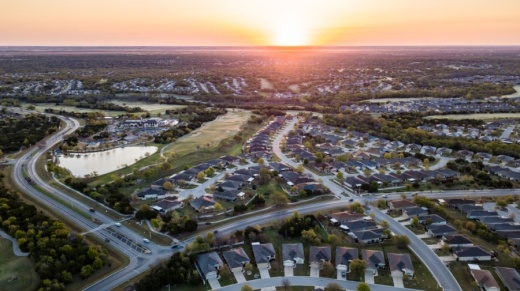In it, he said Williamson County is slated to see a $14.6 billion year-over-year increase in taxable value, a 19% jump. In 2020, the year-over-year increase was $4.59 billion from the year prior.
While he does not have firm data, Lankford said anecdotally he has heard the Austin metro is seeing the highest year-over-year increase in taxable value.
“Travis County is going up tremendously. Hays County is going up tremendously,” Lankford said. ”The numbers I'm hearing out of Dallas, Fort Worth and Houston are more moderate ... like 8% to 12%. That’s a great year; we just haven’t seen this.” The taxable value is the market value of a home, or what a buyer is willing to pay for the home at the current market price. With low housing inventory in Central Texas and high demand, market values have increased at an aggressive rate, Lankford said. The taxable value is used to determine owed property taxes to a taxing entity. The WCAD is not a taxing entity; it simply determines home values based on the market as of Jan. 1. Common taxing entities include counties, cities, school districts and others.
Taxing entities determine tax rates based on WCAD appraisal information. If an entity does not reduce its tax rate equivalent to the rate of increased values, property owners are likely to see their owed taxes increase. “[The WCAD] represent only one side of that equation,” Lankford said. “It was designed that way when they created appraisal districts to create a separation from the value and the rate. That way [voters] can go to their elected officials on the rate but the value should follow the market.”
Property owners cannot protest their taxes; however, they can protest the value of their property, which if reduced can lower property taxes, according to the WCAD website.
Lankford said the WCAD valued over 253,000 properties with a total market value of $108 billion as of Jan. 1, 2021, up from $89.89 billion the year prior.
“It’s just an incredible growth rate over the last few years,” he said. The total market value of real residential parcels saw its greatest year-over-year increase with a reported $69.5 billion value, up from $52.97 billion the year prior.
The residential market value for those less than 20 acres increased to $63.83 billion, up from $51.01 billion the year prior.
The median home value also increased to $323,450, up from $273,988.
“When you look back at the end of the pandemic, no one was predicting this level of increase,” Lankford said. “In fact, during the pandemic, most people were predicting decrease, and to see what happened after that, it just tells us even industry experts aren't sure when you have global things like [the coronavirus pandemic] occur, what that means locally.” Those looking to protest property values have until May 15 to do so.
On the WCAD website, owners can find neighborhood, market and countywide data breakdowns.
In addition, due to new state legislation, Williamson County property owners can view property-specific tax breakdowns and figure out their tax calculations at www.williamsonpropertytaxes.org.





